Jane O'Malley - Black & White: Works on Paper, 1971-2017
★ ★ ★ ★ ★
A retrospective devoted entirely to drawing, with a little print thrown in, is a rare thing. Jane O'Malley's Black & White is just that and not only is it a thoroughly satisfying show in itself; it also sharpens and enlarges our understanding of the artist. Although she has always had sketchbooks on the go, she is best known for her poised, elegant paintings and pastels in colour. Whatever the medium, her habitual areas of subject matter are a constant: still life, interiors, garden and landscapes, animal studies and occasionally people studies, made in Ireland, Cornwall, the Bahamas, and Lanzarote.
It makes up, in all, a domestic world in the sense that, at every stage, her work provides a diary-like account of her day-to-day life, and mostly that life was, until his death in 2003, shared with the painter Tony O’Malley.
Jane’s birth name was Harris. She was born in Montreal and, in her early 20s, set off to travel in Europe, staying for several years in Switzerland where she worked as an au pair. The idea that she would like to apply herself to being an artist was always there in the back of her mind. She was in London with her brother and on the point of returning home when she had a strong urge to stay and pursue the art option. She consulted her father, who was sympathetic, and came up with an appealing idea: as an alternative to the urban excesses of London, what about trying the St Ives School of Painting in Cornwall?
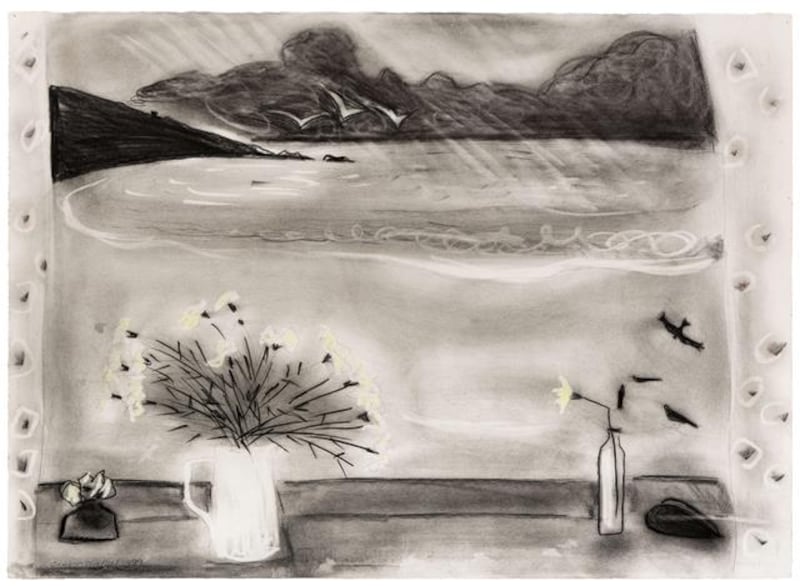
She arrived there in 1969. St Ives had acquired a justified reputation as a lively, alternative, cosmopolitan haven for contemporary artists, a home for many significant talents, including at various times Ben Nicholson, Peter Lanyon, Barbara Hepworth, Patrick Heron and Terry Frost. It also attracted an impressive Irish contingent, notably Tony O’Malley, Breon O’Casey, and Conor Fallon. O’Malley had moved to St Ives around 1960 after a couple of exploratory visits. Born in Callan, Co Kilkenny in 1913, he worked for many years as a bank clerk and painted in the evenings (sometimes surreptitiously, as he lived in rented rooms and painting could be regarded as a suspicious activity). TB led to his retirement from the bank and, during prolonged convalescence, he gradually resolved to devote his life to his passion for painting.
St Ives was a liberation for him, a stimulating place densely populated with people of like mind. Though he was certainly a kind, gentle, gracious man, it would be entirely wrong to sum O’Malley up in terms of his niceness. He was also determined, perceptive, intellectually curious and had a droll wit. Although she was 30 years his junior, Jane was completely taken with him.
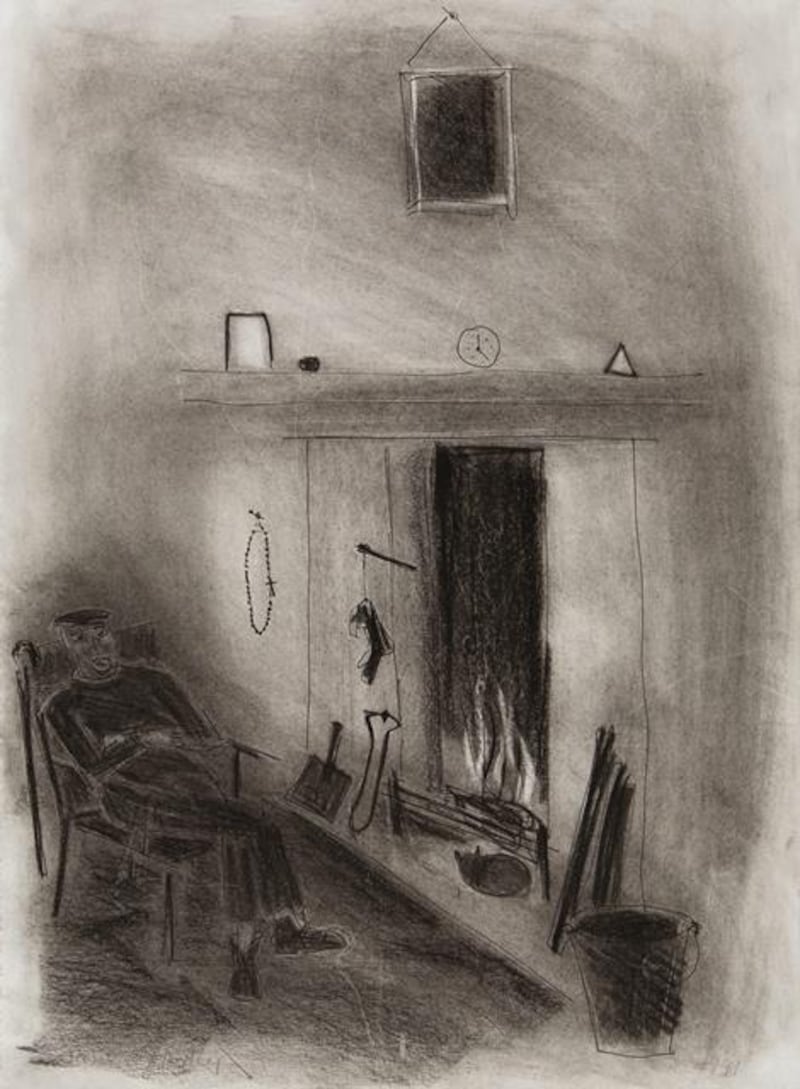
They married in 1973 and settled into a communal working life in St Ives after a honeymoon in Switzerland. Her worktable at their home in Seal Cottage looked on to the sea. This setting, inside and out, forms the subject matter for much of her work during the years in St Ives until they moved to Ireland in 1990. The interior was in itself a composition, a careful arrangement, with flowers, plants and vessels as essential components. Regardless of where she is, O’Malley always composes her surroundings in this way, arranging and rearranging relatively few elements in endlessly inventive ways, thinking ahead to the drawings and paintings she will make.
Possible artistic exemplars for her graphic approach include Henri Matisse (especially the brush drawings from Lanzarote), Ben Nicholson and David Hockney
Graphic contrasts
Tonally she likes either strong graphic contrasts or soft, amorphous expanses. Line rules in both cases, in busy, purely linear arrangements or by corralling and focusing those tonal or, in paintings or pastels, chromatic expanses. Her line is exploratory and alert, charged with the tension of discovery. She takes a chance on it and doesn’t allow herself the escape clause of revision. So that even though her subject matter is more often than not relaxed and inviting, the images are taut and lively.
Possible artistic exemplars for her graphic approach include Henri Matisse (especially the brush drawings from Lanzarote), Ben Nicholson and David Hockney. But her own personality is decisive and unmistakable. Not surprisingly given that they usually worked in close proximity, Tony appears more than once as a subject and there are some self-portraits and many portraits of their cats. It is sometimes assumed that, given Tony’s head-start and his status, his influence on her work was decisive but, going back to the early 1970s, her individuality is never in doubt in her drawings. And, given their close working relationship, it’s very likely that each influenced the other in ways that may not be immediately obvious.
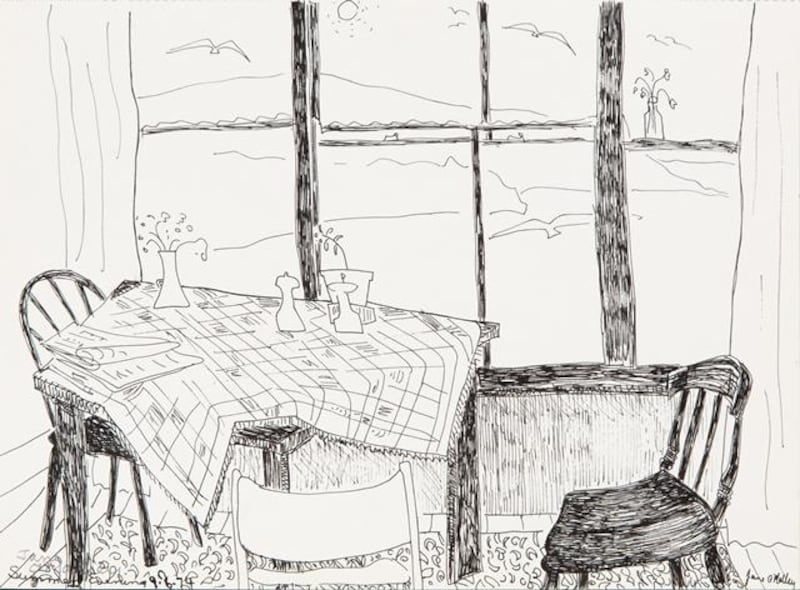
The drawings chronicle the pattern of their years, when they were based first in St Ives and then in Physicianstown, with regular travels, to Lanzarote, and the Caribbean – and a very productive visit to Clare Island. Work is an unwavering discipline throughout, and it remains one for Jane. Butler director Anna O’Sullivan, who curated the exhibition, has served her work exceptionally well. The gallery’s sequence of rooms allows for logical divisions. The walls are toned down to a mellow grey that frames the drawings perfectly. A looped video enlarges on the exhibition selection and emphasises O’Malley patient, long-term commitment to living as working, and vice versa.
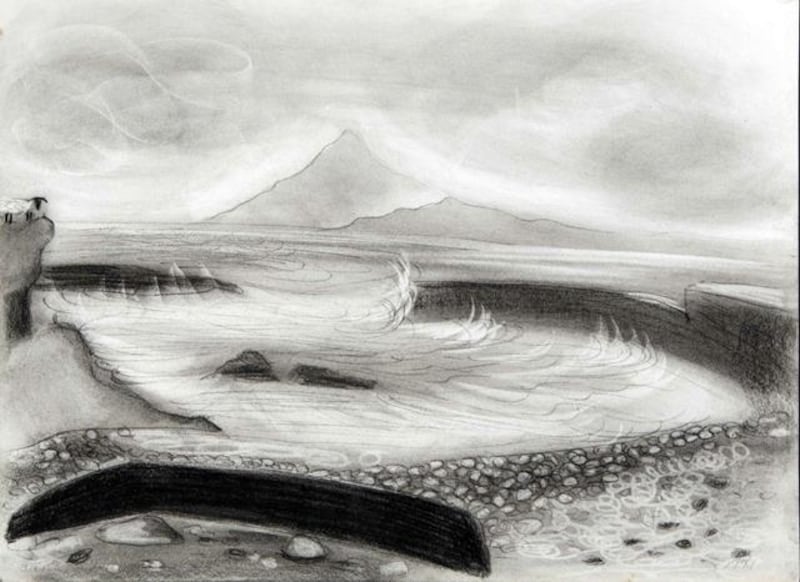
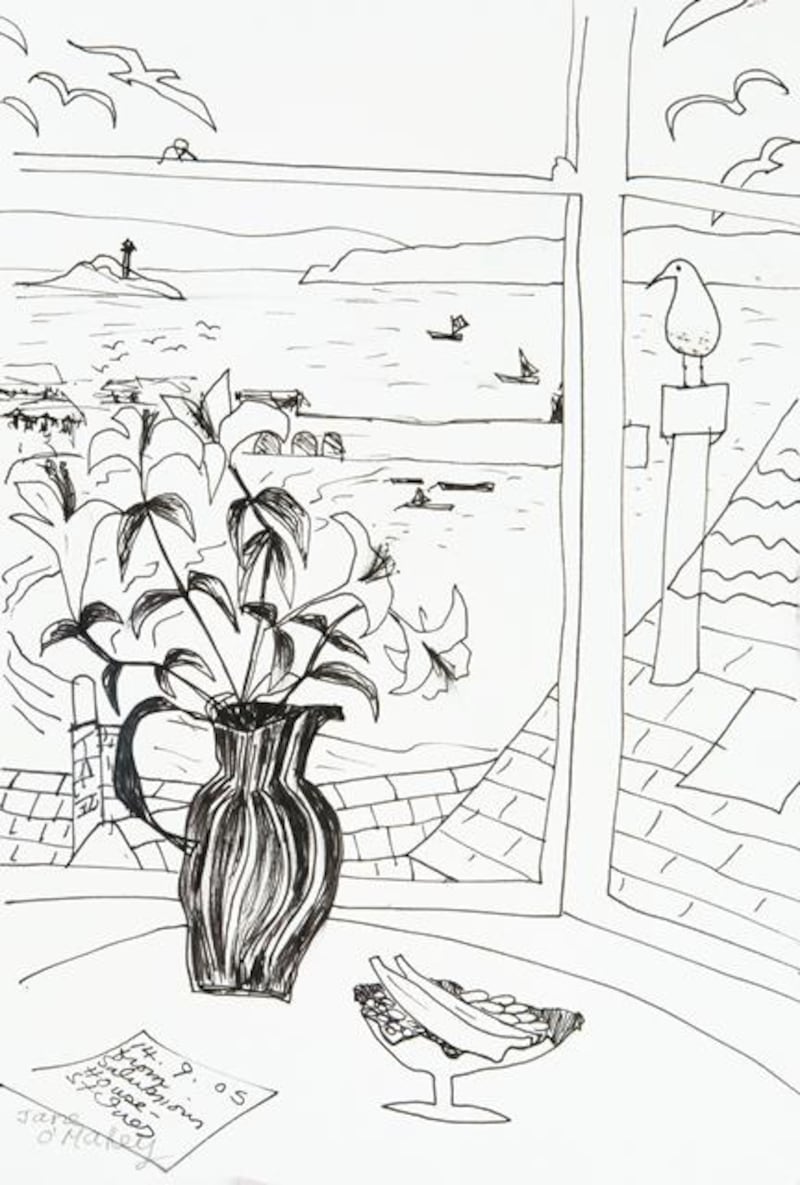
- Jane O'Malley. Butler Gallery, The Castle, Kilkenny, Until February 25th, butlergallery.com











